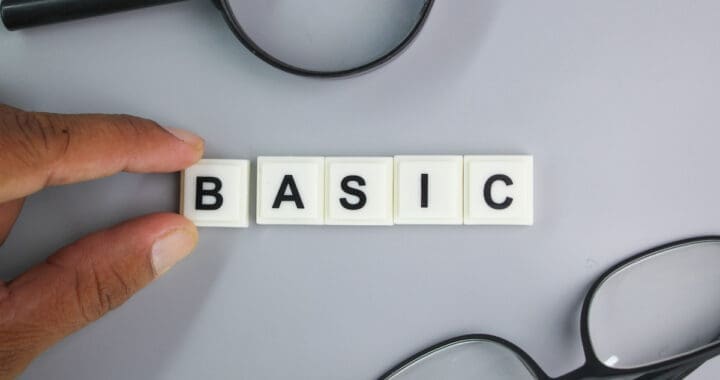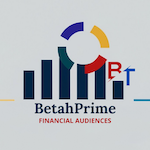Achieving financial independence and retiring early (FIRE) is the dream for many. But not all FIRE paths are equal. Lean FIRE and Fat FIRE represent opposite ends of the FIRE spectrum. Understanding the key differences can help you decide which version of FIRE is suitable for your goals and lifestyle.
What is Lean FIRE?
Lean FIRE stands for “Lean Financial Independence Retire Early.” It refers to achieving FIRE with minimal annual spending.
The fundamental principles of LeanFIRE include:
– Spending less than $40,000 per year (often as low as $25,000 per year)
– Minimizing expenses and living a frugal lifestyle
– Accumulating enough investments to cover basic needs
– Retiring early, as soon as you hit your target savings amount
The Lean FIRE movement is about cutting back spending to the bare essentials. Devotees aim to save and invest aggressively. Once their investment income can cover a minimum standard of living, they plan to retire.
Lean FIRE appeals to those with a do-it-yourself or minimalist philosophy toward life and finances. The lean approach provides a path to achieve financial independence and quit full-time work much earlier than the traditional retirement timeline of age 60-65.
For example, someone pursuing LeanFIRE might aim to retire fully by 40 or 45 by keeping expenses low and saving aggressively. This allows for 20+ more years of freedom from mandatory work than those who retire at a traditional age.
Those drawn to LeanFIRE often relish severing their reliance on a 9 to 5 job as quickly and thoroughly as possible. They may enjoy tackling projects themselves, living simply, and engineering clever hacks to reduce spending drastically. Lean FIRE devotees are willing to make sacrifices in lifestyle in exchange for the autonomy, flexibility, and free time that comes with ultra-early retirement.
The minimalist philosophy extends to their finances and other aspects of life. For example, Lean FIRE adherents will likely optimize housing by choosing smaller, more modest homes and even taking on DIY renovations themselves. They derive satisfaction in finding ways to save money while still meeting basic needs. Lean FIRE provides a systemic framework that resonates with those already inclined towards frugality, self-sufficiency, and financial pragmatism.

Is Lean FIRE Right for You?
LeanFIRE can be ideal if you:
– Enjoy a minimalist, frugal lifestyle
– Are disciplined and comfortable with sacrifice
– Want to retire as young as possible
– Are single or in a very low-cost area
The lean approach maximizes how fast you can quit the 9-5. However, it requires strict budgeting and potentially significant lifestyle compromises.
You’ll need to cut non-essentials and be satisfied with the basics. Lean FIRE may involve:
Downsizing your home.
Driving older cars.
Doing DIY projects instead of hiring contractors.
Having limited travel or dining out funds.
Ask yourself: Will you be happy living on the bare minimum long-term? Or will you feel like you’re depriving yourself too much?
What is Fat FIRE?
Fat FIRE refers to “Financial Independence Retire Early” with a more affluent lifestyle. It means having ample savings to retire young while maintaining your current standard of living.
The principles of FatFIRE include:
– Spending $100,000+ per year (sometimes into the millions)
– Having abundant discretionary income
– Accumulating an extensive portfolio to fund luxuries and conveniences
– Retiring early but with lavish budgets for travel and leisure
Pursuing fat FIRE involves aggressive investments as well. But the focus is having enough wealth to keep enjoying extravagances without a job.
Fat FIRE allows for retiring early, potentially decades before age 65, without compromising your accustomed lifestyle and pleasures. With FatFIRE, you can continue enjoying luxuries like fine dining at Michelin-starred restaurants, taking exotic vacations to far-flung locations, wearing designer clothes, and outsourcing household tasks to paid help.
The Fat FIRE path recognizes that many high earners develop expensive tastes and lifestyle habits. They enjoy pampering themselves with premium services and amenities. Fat FIRE enables accelerating the retirement timeline dramatically while still having ample assets and passive income to maintain their standard of living.
Someone pursuing FatFIRE aims to save and invest enough to replicate their current income of potentially hundreds of thousands or even millions of dollars annually. This allows them to continue things like:
Flying first class.
Staying at 5-star resorts.
Getting massages weekly.
Having personal trainers.
Drinking $500 bottles of wine.
Joining country clubs.
Owning multiple residences.
Having full-time housekeepers.
Fat FIRE grants the freedom to enjoy extravagance and leisure without the burden of a career. It frees more time for exotic vacations and recreation by paying others to handle mundane tasks. For those accustomed to executive lifestyles and privileges, Fat FIRE is about achieving financial independence without forsaking the comforts and conveniences they are used to.

Is Fat FIRE Right for You?
FatFIRE can be ideal if you:
– Have expensive taste and lifestyle habits
– Want to maintain a high standard of living when retiring early
– Don’t want to scrimp on comforts or conveniences
– Prefer outsourcing tasks to save time
Fat FIRE allows you to enjoy your youth while retiring well before 65. You can quit working as soon as your investments can sustain the level of spending you’re accustomed to.
The tradeoff is the fat FIRE number requires significantly higher assets and more considerable savings. For someone used to a 6-figure lifestyle, the target could be $5 million or more.
Ask yourself: At what income level would you be able to retire without feeling like you’re pinching pennies? How much is needed to keep your ideal lifestyle?
Key Differences Between Lean and Fat FIRE
| Key Point | Lean FIRE | Fat FIRE |
|---|---|---|
| Annual Spending | <$40,000 | >$100,000 |
| Lifestyle | Minimalist | Luxurious |
| Essential expenses | Covered | Covered |
| Discretionary budget | Very little | Abundant |
| Net worth target | $500k-$1M | $5M+ |
| Timeframe to FIRE | Fastest | Still fast for income level |

The table summarizes how lean FIRE and fat FIRE differ:
– Spending Levels: Fat FIRE has 2-5x the annual budgets of LeanFIRE. This supports lavish conveniences.
– Lifestyle: LeanFIRE folks are comfortable with a minimalist lifestyle. FatFIRE seeks to maintain current luxuries.
– Essential Expenses: Both cover basic needs like housing and utilities. But FatFIRE budgets more for premium accommodations.
– Discretionary Income: LeanFIRE leaves little room for dining out, leisure travel, or services. FatFIRE includes abundant extras.
– Wealth Targets: The assets needed for fat FIRE can be 5-10x greater than for lean. But fat FIRE still requires aggressive saving.
– Early Retirement Timelines: FatFIRE may enable retiring 5-10 years sooner than expected at a given income level. LeanFIRE often allows retiring decades early.
In summary, lean FIRE is about quickly escaping the rat race at a basic spending level. Fat FIRE is about retiring young but keeping up more lavish lifestyles.
How to Decide: Lean vs Fat FIRE?
Choosing between lean vs fat FIRE will depend on your own preferences and situation:
– Your Tastes: Do you relish simple pleasures? Or are fine dining and luxury amenities a priority? Don’t assume you need fat FIRE to be happy.
– Your Stage of Life: Are you single or a couple with no kids? Or is providing for a family part of your plan? Households need more giant nest eggs.
– Your Income Level: Lean FIRE is more viable for average earners. Fat FIRE requires high incomes or windfalls to accumulate sufficient assets quickly.
– Your LOHCOL Area: Lean FIRE is more accessible in low-cost-of-living places. Big city dwellers may need to downsize housing for lean FIRE.
– Your Joy and Passions: Do you have cheap hobbies like hiking? Or is golfing at premier courses or yacht ownership your thing?
– Your Health: Will you have higher healthcare costs that require padding your FIRE budget?
When it comes to choosing the right path to FIRE, there’s no one-size-fits-all solution. Depending on your goals, priorities, and lifestyle, you may find yourself somewhere between lean and fat FIRE. The key is determining what spending and savings level is necessary to achieve your desired freedom and security.
Crunching the numbers can help you figure out how much you’ll need to save, how much you can afford to spend each year, and how long it will take to reach your goal. This can be done through detailed budgeting, estimating future expenses, and projecting investment returns. You can find the sweet spot that balances your present and future needs by analyzing different scenarios and trade-offs.
Remember, the path to FIRE is not a race or a competition. It’s a personal journey that requires careful planning, discipline, and patience. Whether you choose lean or fat FIRE or a hybrid approach, the goal is to create a life that aligns with your values and dreams.
Tips to Achieve Lean or Fat FIRE
Whichever version you pursue, here are tips to retire early with sufficient finances:
– Have detailed monthly budgets and projections of retirement costs. Track spending diligently.
– Maximize income early in your career to turbocharge savings rates. Consider a side gig, too.
– Invest aggressively in tax-advantaged retirement accounts and brokerage accounts. Let compound growth work its magic.
– Use strategies like index funds, target date funds, or robo-advisors to invest smartly with little time input.
– Save for retirement first before other goals like college funds or vacations.
– Consider relocating to areas with lower living costs to make FIRE numbers more achievable.
– Find like-minded online communities for insight and accountability in pursuing FIRE.
– Test-drive living on your estimated FIRE budget before making the leap to ensure it’s sustainable.
Key Takeaways
– Lean FIRE and Fat FIRE are common early retirement paths with different spending levels.
– Lean FIRE focuses on extreme frugality to retire ultra early. Fat FIRE maintains lavish budgets.
– Which path aligns best depends on your lifestyle, tastes, life stage, and income expectations.
– Both require aggressive savings and investments. Relocating and diligent planning can help.
– Join online FIRE communities for inspiration and support in pursuing financial independence and early retirement.

Frequently Asked Questions
Q: Can I change from lean to fat FIRE or vice versa?
A: Yes, it’s possible to transition between lean and fat FIRE. For example, you might initially retire early with a lean budget. But later earn additional income through side projects that allow you to fatten your FIRE lifestyle. Or you may be happier returning to work part-time in retirement for more discretionary spending. There can be flexibility once you reach FIRE.
Q: Is barista FIRE the same as lean FIRE?
A: Barista FIRE refers to working part-time at lower-stress jobs once your investments can cover basic costs. Since barista FIRE still involves some work income, your own assets may only need to support leanFIRE level spending of around $25-40k. The part-time work then provides for any discretionary spending above essentials.
Q: Can I do fat FIRE if I don’t have a huge income?
A: Fat FIRE is possible even with more modest incomes if you save and invest diligently for 5-10+ years. Options include maximizing pre-tax retirement contributions, living well below your means, banking bonuses/RSUs, having a side income, earning investment returns, and more. However, achieving fatFIRE requires targeting it specifically and being strategic with budgets.





